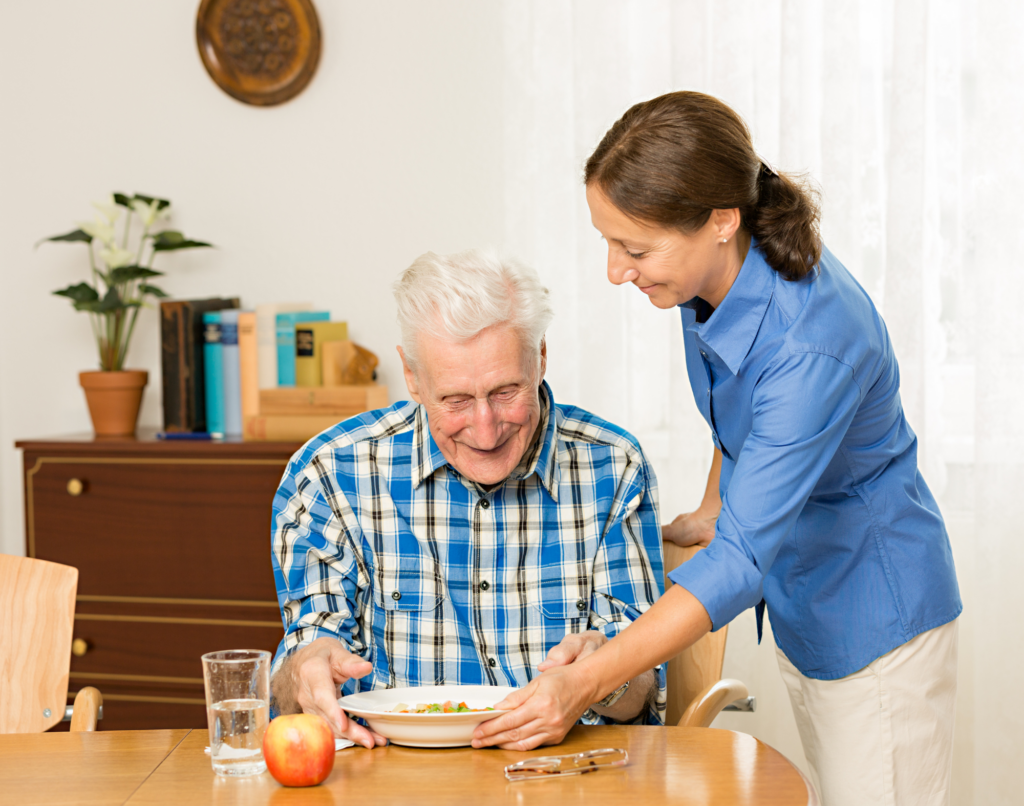As people get older, their bodies change. Illness or injury may cause decreased physical activity. Senior Citizens may experience suppressed appetite due to social, psychological, or physiological factors. Lifestyle or economic changes often lead to modified food intake. Dietary changes may be sudden or gradual. Transitions that come with aging put Senior Citizens at a higher risk of malnutrition.
What Causes Malnutrition in Senior Citizens?
There are several factors that can lead to malnutrition in Senior Citizens. The leading causes are either inadequate food intake or poor nutrient absorption. Hormonal changes associated with aging affect a person’s appetite as well. A wide range of factors puts older adults at a higher risk of not eating right.
- Living alone
- Placement in a hospital or nursing home
- Financial difficulties
- Medication side effects
- Mental or cognitive impairment
- Problems with chewing or swallowing.
- Difficulty using utensils due to declining dexterity
- Sensory changes to taste, smell, and vision
- Mobility or transportation difficulties
Symptoms of Malnutrition
Recognizing the symptoms of malnutrition can help caregivers identify the problem early and seek help. Changes in weight or appetite are the most obvious warning signs of malnutrition in Senior Citizens. There are also several less apparent indicators:
Dry hair and skin
Dry or sunken eyes
Receding gums
Confusion and irritability
Physical weakness and fatigue
Delayed wound healing
Swollen abdomen
The symptoms vary based on which nutrient is lacking. For example, protein deficiency leads to fluid retention, which manifests as a protruding stomach. A lack of zinc causes slowed healing, hair loss, and diarrhea. Dry eyes and night blindness can come from a scarcity of Vitamin A.
Care and Treatment
To treat malnutrition in Senior Citizens, caregivers must first address the underlying causes. For example, a person with deteriorating dexterity may have difficulty feeding themselves. Adaptive utensils can help older adults eat with dignity. For those with dental or oral problems, ensure properly fitted dentures and prepare foods that are easily chewed. Some Seniors feel full and don’t finish their meals. Smaller, more frequent meals can increase daily nutrient intake.
Older adults may not consume as many foods as they did when they were younger. So their bodies need more nutrition from fewer calories. Nutrient-dense foods are crucial to combating malnutrition. Plan a diet rich in proteins, fiber, vitamins, and minerals. In general, the daily intake for adults over 65 includes:
- 5 servings of whole grains
- 5 servings of fruits and vegetables
- 2-4 servings of low-fat dairy
- 2-3 servings of meat, eggs, or beans
- 5-8 glasses of water
The unique nutritional needs of Senior Citizens make it challenging to find the right balance of foods. Changes that come with aging often necessitate changes in diet as well. Caregivers must be vigilant in identifying the signs and symptoms of malnutrition.
In-home care from a Certified Homemaker-Home Health Aide or Companion Aide can help combat malnutrition in older adults. CHHHAs and Companion aides can help Seniors plan meals, shop, and cook so they have the right balance of nutrients. Learn more about how Anita’s Angels, Inc. can help your Senior eat right and live independently—call 908-788-9390.





